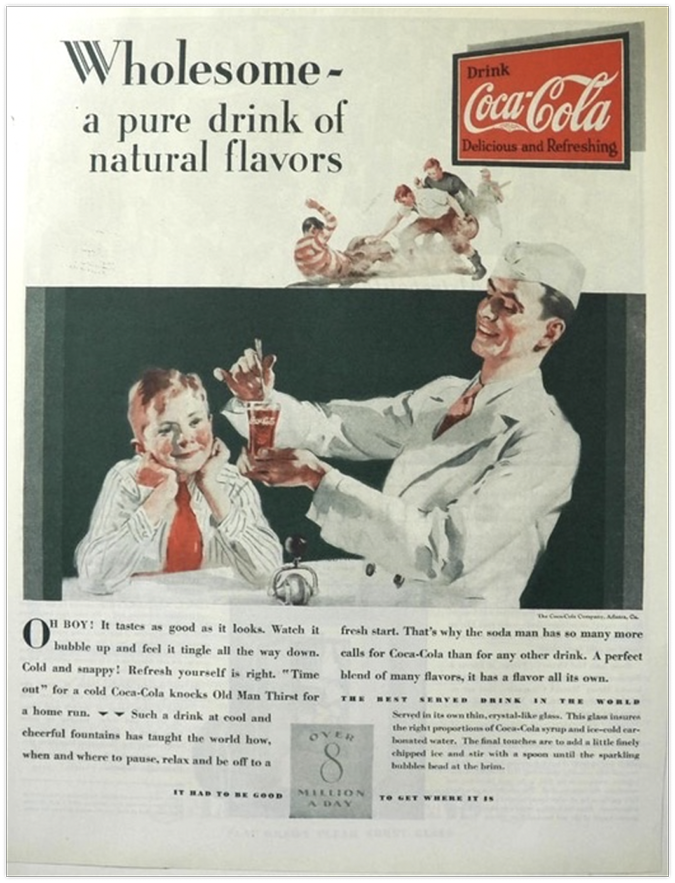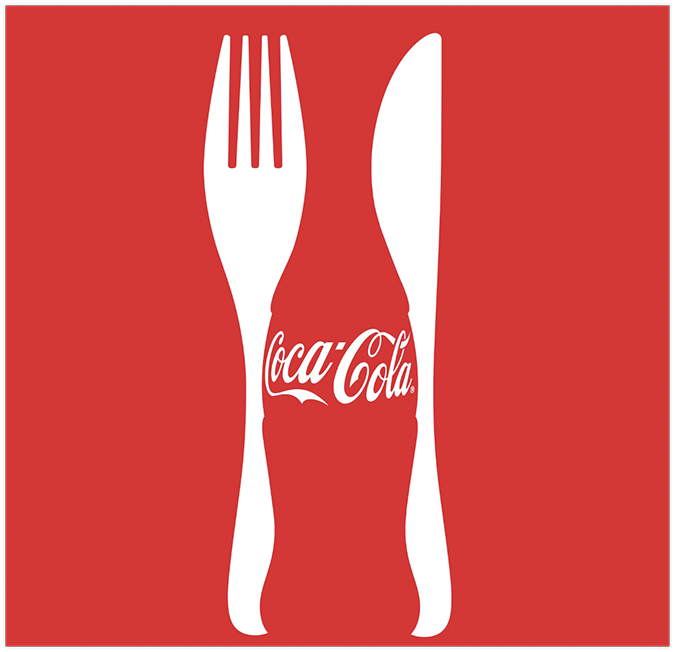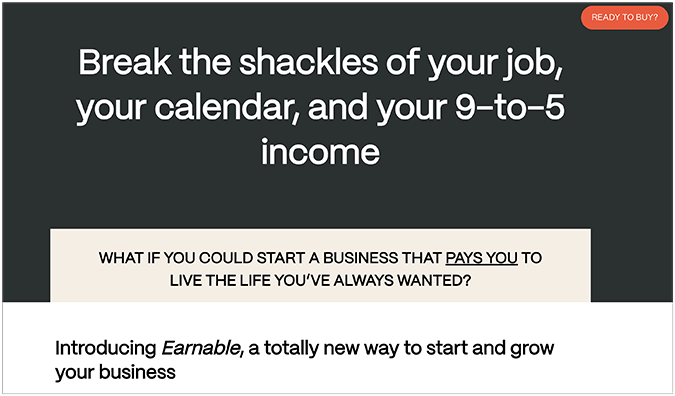As a rule of thumb, use short copy when you have a limited window of opportunity to nudge a customer toward an action, as is the case with headlines, social media ads, cold email outreaches, and formula-driven (PAS, BAB) short-form presentations. The customer is typically in the deeper stages of the sales funnel.
Use long copy when the subject is complex, the product is more abstract, when you need to educate and persuade customers, or when the target demographic isn’t in a hurry to convert, like in landing pages, sales letters, highly structured copywriting frameworks (AIDA, 4C’s), and email marketing newsletters. The customer is only beginning to explore the first stages of the sales funnel, i.e., they’re ready to learn more, but aren’t ready to buy.
What Is Short Copy?
In direct response copywriting, short copy (also known as short-form copy) is a straightforward piece of text meant to elicit an immediate reaction from readers, like clicking a CTA, downloading a discount coupon, or calling a number. However, just because it’s short and to-the-point, short copy isn’t easier to compose than long-form copy.
Some professionals would argue it’s actually harder to come up with an effective short copy, specifically because you don’t have the freedom to convey as much information as you want. It has to be direct, compact, tight, effective, actionable, and emotionally poignant, written to illustrate an important message with a limited number of words.
Here are two examples of compelling, relevant, and memorable short copy forms from trusted brands.
1. The Motley Fool’s Facebook ad

The Motley Fool is an online platform dedicated to stock investing, analysis, and market research. Its ad reads: “Billionaires and investors are pivoting to AI, but it’s one company that’s the unsung hero. With AI’s market expected to dwarf today’s tech giants, now’s the time to act.”
Additionally, the subheadline accompanying the CTA reads: “Will This Make the World’s First Trillionaire?”
The ad is perfectly tailored to Facebook’s user base, who aren’t necessarily known for their rigorous research capabilities across the platform. It also uses a fair number of buzzwords and power words like “billionaires”, “trillionaires”, “AI”, and “now” to play the algorithm and excite its prospects at the same time. This ad is a great example of a specifically written short copy that caters to the platform’s algorithm, targets an overlapping demographic likely to be interested in the site’s service, and uses powerful words to get attention and drive the point home.
2. Everything about Waldo’s landing page

In near-perfect symmetry, lens manufacturer and seller Waldo has unlocked the secret behind one of the most appealing landing page designs in recent years. As a contributing factor, the accompanying copy puts a strong emphasis on the product’s benefits (“high-quality eyecare”, “affordable”, “expert-endorsed”, and “convenient”), while strategically side-stepping its features.
This refined approach works wonders for Waldo’s brand, utilizing the power of a few impactful phrases to describe its signature mission and vision statements without overwhelming prospects with redundant information.

When To Use Short Copy
Short copy is great for the following copywriting formats:
- Social media ads (YouTube, Facebook, the X platform)
- Display ads (Amazon, Instagram)
- Native ads (Taboola, Outbrain)
- Search ads (Google, Bing)
- Cold email outreach campaigns
- SMS marketing
Use short-form copy when you encounter one or more of the following requirements:
- There is or needs to be a sense of urgency
- There’s a limited number of words you can write
- Your post will live on a platform comprised of users who have short attention spans, like TikTok
- Your target demographic is known for making quick decisions
- Your ideal customers are primed and ready to buy (they populate the later stages of the sales funnel)
What Is Long Copy?
Long copy (also referred to as long-form copy) is a lengthier piece of copywriting material that can stretch up to a thousand words or more, depending on the context. It allows for greater leniency in word choice and opens the door to broader storytelling beats, literary devices, and other marketing techniques to achieve the result you want. However, leniency doesn’t mean poor writing. The copy still needs to stay sharp to hold the reader’s attention throughout the entire text.
Here are two notable examples of actionable long-form copy that have stood the test of time to this day.
1. John Carlton’s self-defence ad

John Carlton, a modern copywriting juggernaut, comes through once again with a captivating series of self-defense ads featured in print media. Even though this specific ad is 25 years old as of now (originally published in August 2000), it still brims with intensity, character, and an undeniable sense of passion behind its creation.
In addition to his unique stylistic choices for the time, like italicization, capitalization, bold fonts, and vibrant colors, John puts up big claims right from the get-go to capture the fleeting attention of newspaper readers before losing them forever.
The meat and potatoes of Mr. Carlton’s work comes down to the eons-old story of the underdog overcoming all odds and beating the favourite; in this case, the underdog is one Tom Proctor and he’s backed up by his secret fighting system, while the favourite is every opponent he faced off against—and defeated—in the ring. Despite being seemingly outmaneuvered (most of his opponents were younger than him), and outgunned (they were also heavier than Tom), these unfavorable conditions didn’t stop him from being crowned champion after the fight was over.

In other words, John Carlton is telling exactly what readers interested in self-defence like to hear, and he does it with such passion that it becomes nearly impossible not to come out of it emotionally charged and more inclined to fill out the form with a real purchasing intent.

2. Zane Grey’s $1 book club offers

The company behind Zane Grey’s western book series ran these ads from 1971 to 1982, eventually reaching 2M copies sold for “Riders of the Purple Sage”—the most popular title in the lineup by the time the campaign ended.
The copy typically began by transporting the reader to the Western-inspired frontier with captivating headlines such as “Wanted: Someone to Ride with Zane Grey.” Then, the copywriter carefully plucked out some of Zane’s most memorable events and used them to draw prospects further down the sales funnel. Each ad closed with a prominent mailing coupon, inviting readers to subscribe and become members of the book club.
They launched the initial offer at $1 for three books, then subtly bumped the price for any future versions or special, leather-bound editions to $3 and $6.39, respectively. The copywriters also shuffled the terminology for their ideal user base, first calling them subscribers, then book club members, and eventually graduating to library members, which was ultimately more reflective of the type of audience they wanted to attract.

Today, some of these upselling practices would be considered extremely questionable, but that’s beside the main point. The storytelling behind the book club is so well-executed that it almost outshines any of the shady tactics they might have used back in the more lenient days of print marketing.
When To Use Long Copy
Long copy is particularly suited for the following formats:
- Sales letters
- Direct mail advertising
- Single-page, single-product/service websites
- Lengthier email newsletters
- Highly targeted email outreach campaigns
- Infomercial scripts
Use long-form copy in these specific cases:
- When you’re selling a complex product or service
- When your product or service is expensive relative to existing market norms
- When you need to address (and diffuse) an extensive number of product/service-related objections
- When your target audience populates the beginning stages of the sales funnel
- When there isn’t a word limit to your copy
The Great Copy Length Debate
Currently, there’s an ongoing debate regarding copy length, and the arguments boil down to:
- Camp 1—Short copy is better
- Camp 2—Long copy is better
- Camp 3—Both short copy and long copy have their strengths and weaknesses, while their use cases are highly dependent on the context
Camp 1 argues that the quick and simple nature of short-form copy makes it the ideal weapon of choice for most conversion-related writing forms. Plus, the plummeting attention spans of modern consumers are undeniable proof that short copy will overtake longer copy in terms of popularity and ubiquity in the near future.
According to Camp 2, the most powerful element of direct response copywriting is, simply put, information. Long-form copy allows more information to be presented to the prospect, thereby increasing your chances of making a conversion. Decreasing attention spans aren’t a big problem because, according to Camp 2 advocates, prospects who drop out of the sales funnel weren’t that interested in your product/service to begin with.
Lastly, Camp 3 doesn’t take a strong stance against any of the two different schools of thought, i.e., Camps 1 and 2. According to Camp 3, both short and long copy have specific use cases and can be effectively leveraged under the right circumstances and in the appropriate context, such as using short copy to create memorable display ads and resorting to long copy tactics to write an effective, conversion-oriented email newsletter.
Key Differences: Short Copy vs Long Copy
There are five key differences between short and long copy.
1. Length and format
Short copy is brief, tight, direct, and concise. It’s typically shorter than 1,000 words. Example: “Impossible is Nothing” by Adidas.
Long copy typically goes over 1,000 words. Example: Joe Sugarman’s BluBlocker ad.
2. Use cases
Short copy is meant to grab your attention immediately, be read quickly, and inspire action on the customer’s part, like in famous brand taglines, free giveaways, or simple products/services.
Long copy delivers tons of product/service-related information, tells a captivating overarching story, and tries to build an emotional connection with readers, as utilized in high-value products or expensive services.
3. User engagement
Short copy is ideal for mobile, social media, and likewise other busy users.
Long copy targets individuals who are very interested in the product/service you’re selling. It requires a greater time investment, and it’s sometimes meant to be read multiple times before readers warm up to the underlying message.
4. Objection-handling
Given its concise nature, short copy can’t address many objections in a single package.
Long copy gives copywriters the space to cover as many objections and counterpoints as necessary, feature comprehensive testimonials, add an FAQ section, and list product or service benefits in full detail.
5. Conversion tactics
Short copy performs well in low-stakes, low-price situations or when customers already know and trust the brand (i.e., Apple’s product pages).
Long copy is more effective for higher-priced items, technical products, or when you have to build trust with customers before introducing them to the main offer.
Notable Similarities: When Long- and Short-Form Techniques Come Together
Despite their differences, short and long copy techniques sometimes merge together in a crossover fashion. Here’s an example of when a short-copy-oriented formula collides with a framework designed for longer copy, creating a hybrid approach to web copywriting.
Shoelace’s headlines
Shoelace, a growth marketing hub, capitalizes on memorable headlines more than once on its homepage. It employs urgency, customer struggles, and engaging storytelling, topping it off with a condensed version of the PAS framework (Problem, Agitation, Solution) to take the customer on a neat mini journey through its services.
First, it’s the copywriting overture. The main headline uses a commanding tone to draw attention: “Focus on your business. We’ll bring the customers.” It borrows elements from the AIDA framework, even though AIDA (Attention, Interest, Desire, Action) is generally better suited for long-form copy. Either way, this approach illustrates an interesting case of overlap between two different frameworks.

Then, Shoelace unearths the critical pain point: “Digital marketing today ain’t easy.” This is the Problem phase of the PAS framework.

The Agitation phase is omitted. In its place, the agency outlines its digital marketing approaches, colorfully painting a better tomorrow: “How we help.”

Now, it’s time to drive the point home. How? By providing a Solution focused on the ideal outcome and how to get there: “Why Shoelace?” The copy follows a logical progression: “We’re not your average agency, we’re your growth partner. We’re growth obsessed, and we let data drive our decisions.”

Lastly, Shoelace once again borrows an AIDA element—Action—to deliver a well-rounded CTA created to spring users into committing to the final step: “Let’s get growing. Connect with Shoelace.”

It’s a revealing interplay between different copywriting formulas, where each headline serves a unique role in guiding the prospect closer to conversion until they ultimately pull the trigger and subscribe to the service.
Copy Should Be “Long Enough and No Longer”
Often, when professional copywriters are asked how long the copy should be, a popular response is: “Long enough and no longer.”
What this means is that sales copy doesn’t have room for repetition, cuteness, or quirky interjections you think are clever, but they actually end up hurting your conversion rate in the long run. Direct response copy should be long enough, meaning its length should reflect your goals and target audience, and it should stop once you achieve those goals.
Famed copywriter Dan Kennedy has given a tight answer to the copy length conundrum, which was neatly summarized by a Reddit user:
- If the product/service brims with high emotions and is expensive, use long copy (example: a wedding dress)
- If it’s high emotions and cheap, use short copy (example: a winter dog coat)
- If the product doesn’t elicit emotions and it’s expensive, use long copy (example: a rare earth metal like Neodymium)
- If it’s emotionally empty and cheap, use short copy (example: a lollipop)

Ultimately, it takes a lot of experience to know when copy is long enough to cover everything but not too long that you’ve let potential customers slip through the cracks.
How Copy Length Shifts Over Time
For example, when Coke was still an unfamiliar product way back when, it took longer copy to explain what the product was, highlight its benefits, and demonstrate its value in people’s daily lives.

Today, Coca-Cola is the most recognized brand in the world, and its marketing reflects that new reality. It uses minimal text in its ads, relying more on visual storytelling to keep the brand at the forefront of modern consumer habits.

As people’s attention spans, channel constraints, and generational habits change, copy length will naturally follow suit. New products and markets tend to need more copy to explain what’s going on. Once the market understands the product, you need less and less copy until all you end up with is an image of a Coke bottle and the price. And that’s as short as it gets.






